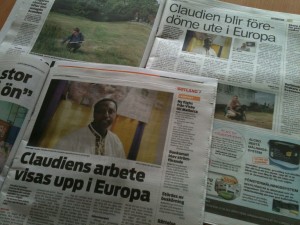In my contribution to Migration: The COMPAS Anthology, which discussed the concept of integration, I concluded with a series of unanswered questions which I think researchers have a duty to address. In this blog post, I take up those issues in order to introduce recent and current research by COMPAS and other scholars that starts to address these questions. I argue that these efforts constitute the research agenda on integration in the coming period.
 First, I asked, how can we go beyond the limits of methodological nationalism to understand the local scale at which integration occurs? As Michael Keith has argued, migrants move between countries, but people move between places. Thinking about each of the domains in which integration occurs, it is clear that they take place at different scales, and most often at a scale smaller than the nation-state. Integration’s “ground zero”, as Ferruccio Pastore puts it, is the local. For instance, socio-economic participation means participation in labour markets which are local, or at most regional, rather than national; social interaction means interaction in real neighbourhoods, streets, libraries, play parks and sports fields. Place matters; space shapes the possibilities and constraints that structure integration processes.
First, I asked, how can we go beyond the limits of methodological nationalism to understand the local scale at which integration occurs? As Michael Keith has argued, migrants move between countries, but people move between places. Thinking about each of the domains in which integration occurs, it is clear that they take place at different scales, and most often at a scale smaller than the nation-state. Integration’s “ground zero”, as Ferruccio Pastore puts it, is the local. For instance, socio-economic participation means participation in labour markets which are local, or at most regional, rather than national; social interaction means interaction in real neighbourhoods, streets, libraries, play parks and sports fields. Place matters; space shapes the possibilities and constraints that structure integration processes.
Building on pioneering quantitative research by the GEITONIES project, these questions of what happens at local level were at the centre of Concordia Discors, a study of eleven European neighbourhoods in which COMPAS participated. Concordia Discors showed that several features of location – including local narratives and historical memories, the commitment of local policy communities, features of the built environment and connectivity to the rest of the city – shape a range of forms of conviviality and tension. This requires further unpacking in sustained multi-sited research.
Concordia Discors, like other European research projects on integration described in this blog post, sought to develop a comparative perspective, working across five countries. This led to fundamental epistemological and methodological challenges – as basic as deciding what constitutes a neighbourhood or a migrant, given different national contexts. This points to my second question: how can we develop comparative research and policy transfer around integration?
The long-standing transnationalist critique of methodological nationalism tells us that the nation-state is the wrong scale to consider integration, yet the terrain is striated by differences at the national level, which open up profound translation problems. EU-funded officials and researchers have often blurred over such translation problems, in what Hannah Jones and I have called a “soupy transnationalism” which glibly boosts putative “good practices” rather than rigorously engages with difference. Our research for AMICALL and EU-MIA showed us that city officials, encouraged by funders and by a European performative space of city boosterism, are too quick to champion city models in the absence of careful evaluation of what might make the model work elsewhere.
We need a more contentious transnationalism to develop more meaningful comparisons. An example of an attempt towards this is the UpStream project on mainstreaming migrant integration policies, which attempts a critical genealogy of how concepts have travelled been taken up in different national contexts before developing comparative research on policy practices.
My third question is if integration is a set of processes occurring in multiple domains, how can we understand the intersection of these domains? To give just one instance, research I did with Dina Kiwan, Zoe Khor and Alessio Cangiano on new UK citizens showed that both inter-ethnic friendships and feeling at home in a neighbourhood were strong predictors of identification with Britain – but not of each other. Similarly, you can be civically active while excluded from the labour market, or residentially segregated while socially integrated. In other words, there are multiple paths to integration.
Social science understands little about how these different domains influence each other. Here, multi-method studies, which track integration outcomes in individual lives over time and in different sites (as with the Sussex project Optimising refugee resettlement in the UK) or which seek to locate integration outcomes as part of a longer migratory career (as with the Interact project exploring integration from a sending country perspective), are vital.
Although we still don’t know enough about relations between different domains, there is enough evidence to show that integration policy is an inadequate response to the integration challenge: it tends to have more effect in “soft” domains such as local belonging and social interaction, rather than “hard” domains like employment. In particular, our legal rights and responsibilities are the foundations on which integration – in all domains – is built. Yet our policy debates on these rights and responsibilities rarely considers the integration trade-off. This is the ground for my fourth question: how do (restrictions on) entitlements impact on migrants’ possibility for integration?
At a national scale, the Migration Policy Group’s MIPEX programme attempts to benchmark the different rights and entitlements of migrants across Europe (and beyond). Moving to a scale below the national, this question also motivates much of the empirical work in COMPAS’ Welfare research cluster, such as IMPACIM, on the impact of admission criteria on the integration of migrants in different European countries.
This emphasis on policy is tied up too in my fifth question: what is the responsibility of the public and institutions of receiving society? If integration is not just the duty of migrants themselves, whose responsibility is it? We don’t know enough about how much public attitudes matter, and what shapes them. We don’t know enough about what difference leadership by public authorities and civil society can make.
Again looking at the local level, several COMPAS projects have attempted to track examples of where city and regional leaders have made a demonstrable difference to shaping integration. The EU-MIA project documented innovative examples across Europe, from Barcelona to Bermondsey and from Visby to Vejle. (Some of the most interesting examples show various forms of “mainstreaming”, the topic of recent research by MPI Europe and of the UpStream project.)
A report to be published later this month by COMPAS and the Pears Institute for the All-Party Parliamentary Group Against Antisemitism, Integration, Disadvantage and Extremism, argues for a greater emphasis on the responsibility of leadership in this area. It suggests that a national strategy for integration should set out detailed, concrete, substantive actions and a coherent methodology for measuring progress based on robust data: such a “smart” approach is the only cost-effective approach to doing social policy in a time of austerity.
A sixth question is how can we do integration research without using a reductive ethnic lens? Nina Glick Schiller and Ayse Çağlar have written about the problem of “methodological ethnicism”: the tendency of researchers to assume that migrants from a particular nation-state or region constitute an ethnic group which can be studied in isolation. Only by shifting our attention from ethnicity to sites and spaces of integration can we overcome this addiction.
Thus in a recent special issue of Identities, Mette Berg, Nando Sigona and I argue that migration studies needs to not simply study single groups in multiple places (Latin Americans in Madrid and Barcelona, for example) and start too to look at multiple groups in single places (the rich plurality of identities which make up a superdiverse neighbourhood like Raval, Kumkapı or Deptford or even an “ordinary town” like Luton or Woking).
In this spirit, Concordia Discors’ comparative approach showed the enormous variation in the possibility of integration in different neighbourhoods, without a priori selecting particular ethnic or national groups for attention. However, one of the key findings of Concordia Discors was that social integration achieved in particular sites is not necessarily transferable to other life spaces: the same groups may cooperate in schools, ignore each other in public gardens, fight in apartment buildings. For instance, in Bermondsey in South London, majority and minority groups may meet and positively interact in the public library but ignore each other on the estate. In San Paolo in Turin, elderly people and migrant men who get on well together in public gardens are in conflict during the night on the street. In Józsefváros in Budapest, Chinese traders employ Roma people but they have no contacts with them in residential areas.
However, this does not diminish the importance of a focus on sites and spaces of interaction; it confirms that integration is not (just) a property of people but fundamentally of spaces, and is therefore contingent on the ever mutable features of place. This point is the starting premise of more recent work in which COMPAS has participated: the WORK>INT project aims to explore eight workplace across four countries, as sites of integration; the Welfare, neighbourhood and new geographies of diversity pilot project in London’s Elephant and Castle explores how different welfare sites – maternity services, primary and secondary schools, housing estates and elder care facilities – function as spaces of interaction. In both projects, a key question is the extent to which interaction in one site is blocked in another.
Finally, how can we attend to the lived experience of integration? Most integration research explores integration outcomes, which is important. But what about the everyday experience of it? This is a methodological challenge, and suggests the importance of granular ethnographic research, hitherto relatively neglected in the integration field. Concordia Discors and the Welfare, neighbourhood and new geographies of diversity project already mentioned both take an ethnographic approach, and I am encouraged that there seems to be a growing trend towards research on “everyday integration” and “living multiculture”.
One of the key findings of much of this work is the gap between what people say in interviews and what people do in real life. Concordia Discors, for example, observed deep, meaningful interactions between migrants and settled people in places where the interviews with settled people suggested high levels of xenophobic attitudes – as well as the lack of meaningful interaction in places where people identified as confident multiculturalists. This finding perhaps illuminates one of the central paradoxes of migration politics: while across Europe growing numbers believe that migration is a threat to the nation, in everyday life in our towns and neighbourhoods people are simply getting on with the task of learning to live with difference.
